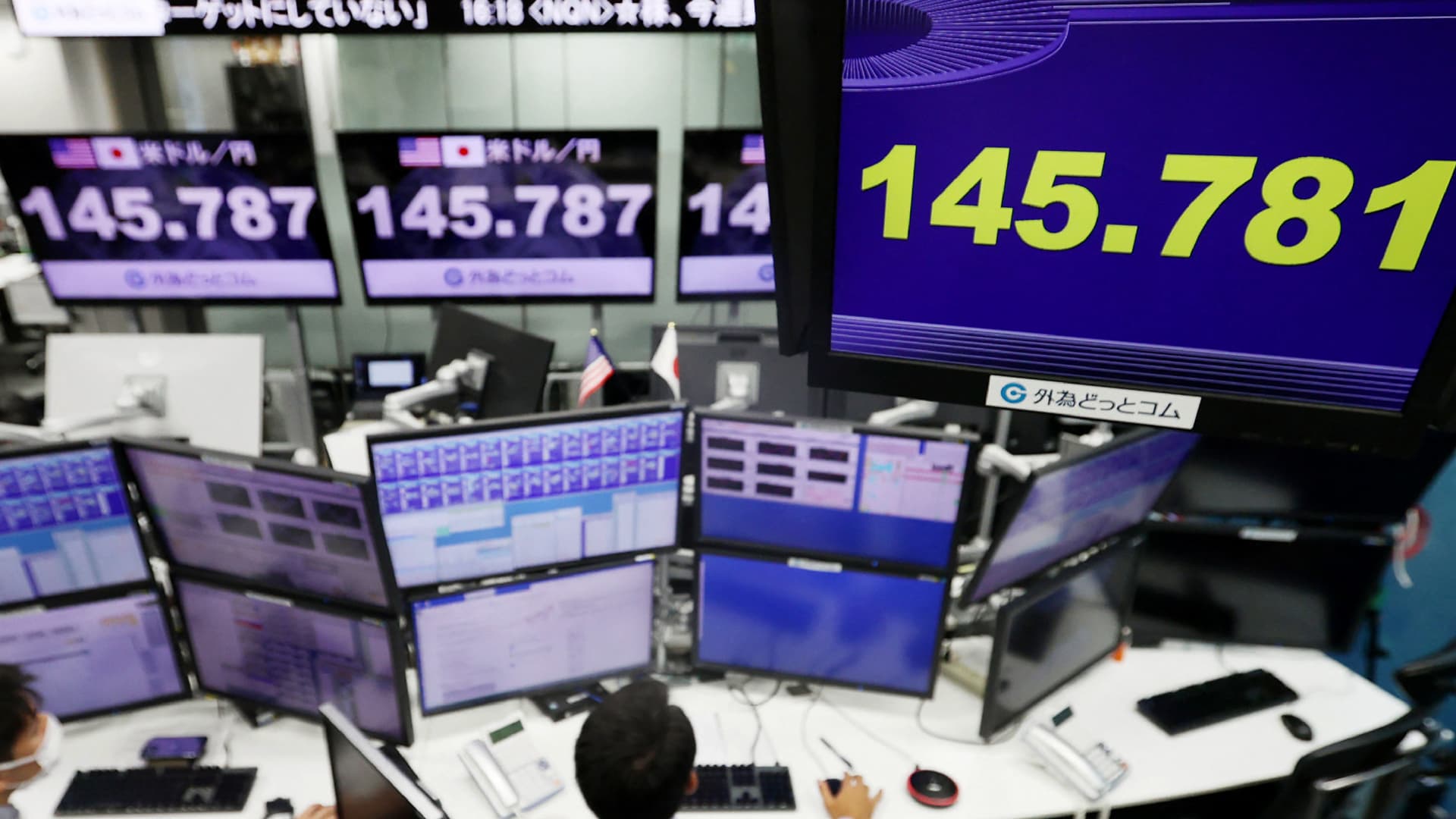
The Bank of Japan could be forced into hiking rates sooner than expected, if the Japanese yen weakens beyond 150 to the dollar.
Higher rates could then unwind the yen carry trade and spark a return of Japanese capital to its domestic bond markets, a move that could trigger market volatility.
The BOJ stands as an outlier as major central banks have hiked rates aggressively to combat burgeoning inflation. Decades of accommodative monetary policy in Japan — even as other global central banks tightened policy in the last 12 months — have concentrated carry trades in the Japanese yen.
Carry trades involve borrowing at a lower interest rate to invest in other assets that promise higher returns.
The Japanese yen slipped about 0.4% to around 148.16 against the dollar on Friday after the BOJ kept its negative rates unchanged, after the yen tested its lowest in almost 10 months at 148.47 per dollar Thursday.

The Japanese currency is under renewed pressure after the U.S. Federal Reserve on Wednesday held interest rates, and indicated it expects one more hike by year’s end. The yen has now weakened more than 11% against the greenback this year to date.
“I think where their hand could be forced is looking at dollar-yen. We’re awfully close to 150 … when that starts to get to 150 and higher, then they have to step back and think: the selloff in the yen is now starting to import probably more inflation than we want,” Bob Michele, global head of fixed income at JP Morgan Asset Management, told CNBC Thursday before the rate decision.
While a weaker yen makes Japanese exports cheaper, it also makes imports more expensive, given that most major economies are struggling to contain stubbornly high inflation.
“So, it may give them cover to start hiking rates sooner than the market’s expecting,” Michele added.
An electronic quotation board displays the yen’s rate 145 yen level against the US dollar at a foreign exchange brokerage in Tokyo on September 22, 2022.
Str | Afp | Getty Images
The BOJ had in July loosened its yield curve control to broaden the permissible range for 10-year Japanese government bond yields of around plus and minus 0.5 percentage points from its 0% target to 1% in Governor Kazuo Ueda’s first policy change since assuming office in April.
Yield curve control, the so-called YCC, is a policy tool where the central bank targets an interest rate, and then buys and sells bonds as necessary to achieve that target.
Economists have been watching for more changes to the BOJ’s yield curve control policy, part of the Japanese central bank’s efforts to reflate growth in the world’s third-largest economy and sustainably achieve its 2% inflation target after years of deflation.
Tightening risks
Expectations of a quicker exit from the BOJ’s ultra-loose monetary policy spiked after Ueda told Yomiuri Shimbun in an interview published Sept. 9 that the BOJ could have sufficient data by the end of this year to determine when to end negative rates.
After that report, many economists brought forward their forecasts for policy tightening to sometime in the first half of 2024.
Central bank officials have been cautious about exiting its ultra-loose policy, even though core inflation has exceeded the BOJ’s stated 2% target for 17 consecutive months.
This is due to what the BOJ sees as a lack of sustainable inflation, deriving from meaningful wage growth that it believes would lead to a positive chain effect supporting household consumption and economic growth.
But there are inherent risks when the BOJ finally decides to tighten rates.
“Japan has been the mother of the carry trade for decades now and so much capital has been funded at a very low cost in Japan and exported to foreign markets,” Michele said.
With 10-year JGB yields hitting its highest in a decade at about 0.745% Thursday, Japanese investors have been starting to unwind positions across various asset classes in various foreign markets that used to offer better returns in the past.
“I worry as the yield curve normalizes and rates go up, you could see a decade — or longer — of repatriation,” he added. “This is the one risk I worry about.”

